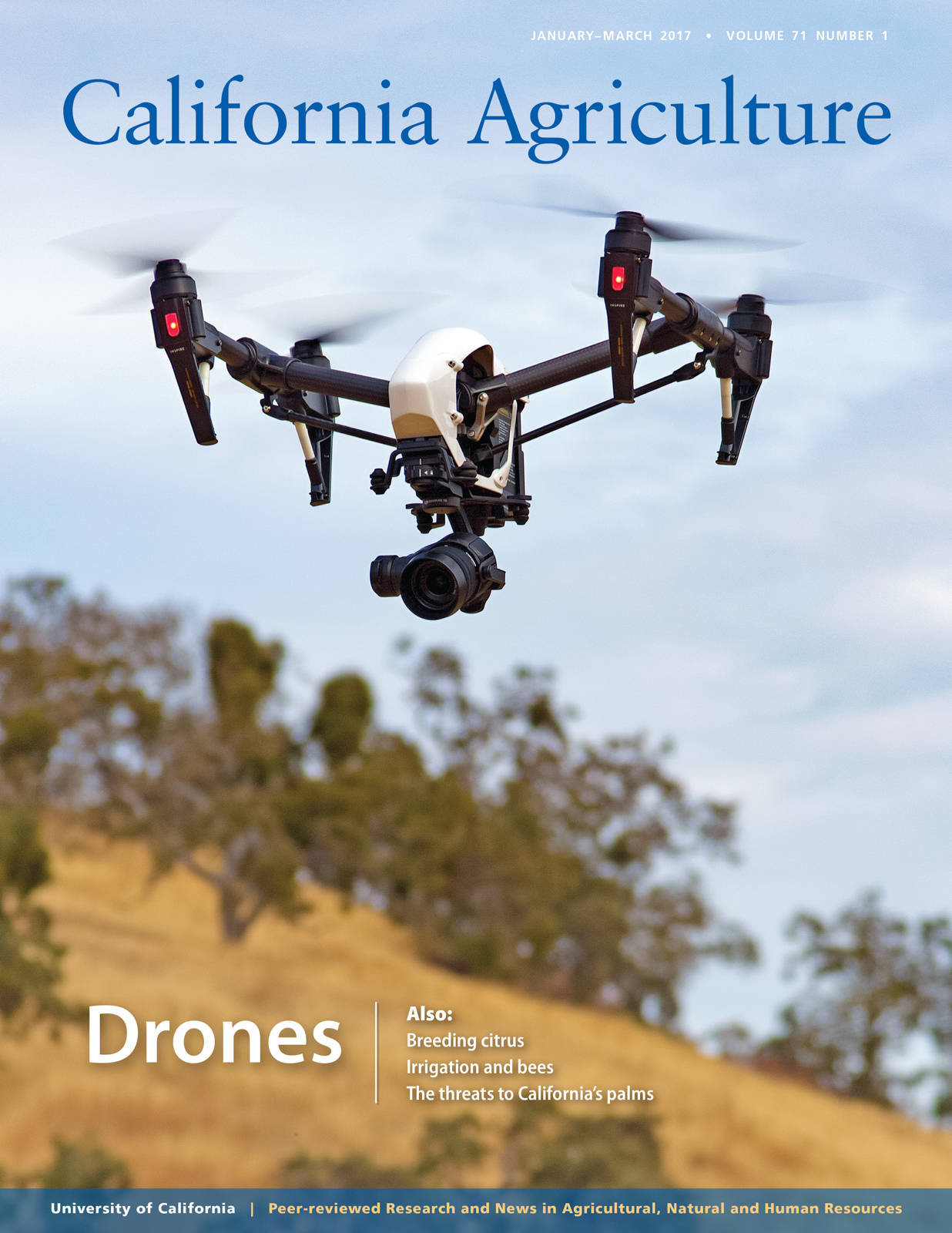All Issues

Drone-mounted cameras and sensors promise more and better data to guide the management of working landscapes and natural areas. Here, a DJI Inspire 1 drone flies over the UC Berkeley Blue Oak Ranch Reserve in Santa Clara County during a training for managers from across the UC natural reserve system. Photo by Evett Kilmartin.
Editor Jim Downing talks about what's in the current issue of California Agriculture journal — mapping soil salinity by satellite; evaluating crop ownership patterns in California; growing oilseeds in winter without irrigation; seeding rangelands; keeping dairy cows cool; and pedagogical lessons for volunteer educators.
Volume 71, Number 1
News and opinion
From farm to ranch to forest, the age of drones is here.
How a decade of congressional inaction set up today’s debates on an issue crucial to agriculture.
Three old trees might save the citrus industry.
The fight to save California’s palm trees from an invasive beetle.
UC studies of conifer encroachment inform rule changes to help landowners.





